While many architects the world over build houses that bring the outside in, in Tahiti it comes quite naturally. South Seas bungalows are, for the most part, built from materials plucked from within a 20-mile radius. That’s by necessity in this tropical locale that lies far from any major shipping hub and relies on the great manufacturer and artisan known as Mother Nature.
On a recent trip to Tahiti, I saw some unbelievably cool South Seas bungalows and picked up some style tips that’ll transform a room, making it feel like a castaway retreat.
Materials Matter in South Seas Style Home Furniture
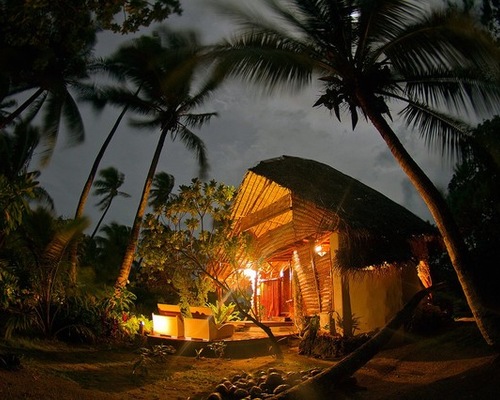

South Seas 1: Christine Ciarmello, original photo on Houzz
Here is the exterior of a beach bungalow on a tiny island in French Polynesia, at a resort called Ninamu. Manager Chris O’Callaghan built every bungalow himself, using the resources of the island: driftwood staircases, woven pandanus leaf roofs, bamboo support beams. Some ceilings and walls are made of washed-up coral. Ninamu is a poster child for using natural materials. No tree was cut down; no coral reef was harmed.
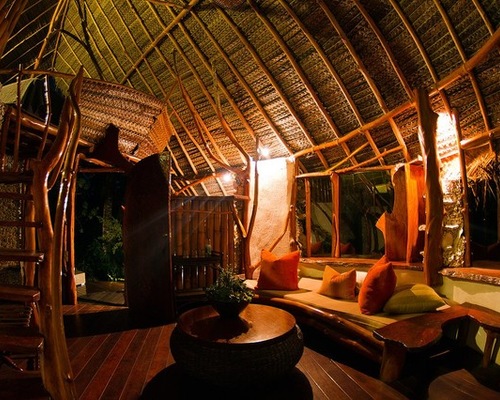

South Seas 2: Christine Ciarmello, original photo on Houzz
Inside Ninamu I encountered this room. There’s barely a smooth surface in sight. Bamboo joints, wooden planks and exotically woven tropical things are in really unexpected places, like the walls, the roof and furniture inlays.
In more specific terms those woven things are coconut leaves (in local parlance, niau) and pandanus leaves. In the bungalows O’Callaghan has used iron wood, lychee wood, tamanu wood, coconut wood, kohu wood, and treated pine. He says the wood was stained by soaking it in the ocean for three weeks.
Home Decor Products in Bamboo, Botanical Prints and Tahitian Colors
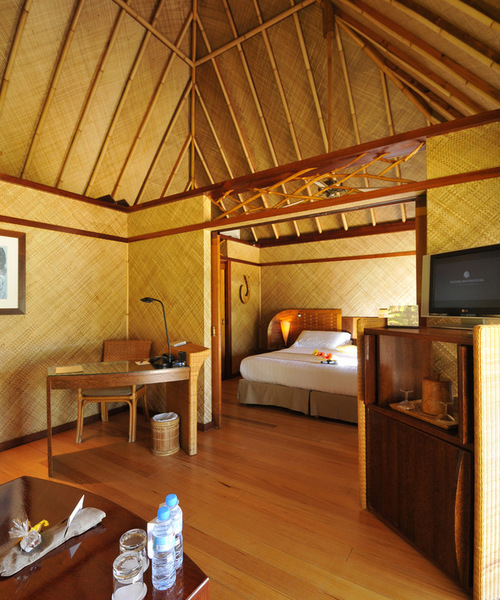

South Seas 3: Christine Ciarmello, original photo on Houzz
Some tips gathered from getaways to bring South Seas style home:
Use natural materials — lots of them. At InterContinental’s Le Moana Bora Bora the airiness of the tropics infuses the space. The walls are woven niau, giving the rooms a warm, honey-colored tint.
Love thy bamboo. The furniture is chunky and elemental. At Ninamu, I saw it in a buffet made of bamboo, and it was a recurring theme in the bungalows.
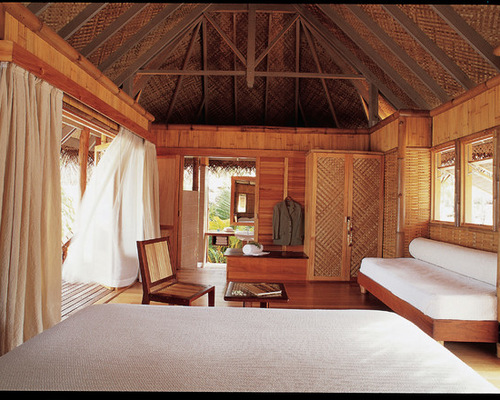

South Seas 4: Christine Ciarmello, original photo on Houzz
Be liberal with white. This is a room in an overwater bungalow at Tikehau Pearl Beach Resort. The bed, the drapes and the daybed in white create a breeziness (though, I admit, it could also be the breeze coming through the window in this photo).
The daybed also has large circular legs, like tree trunks, for that raw, elemental just-ripped-out-of-nature feel. This type of furniture is common in Tahiti. It seems to shout, “Honey, I just chopped down a tree outside and made you this chaise. Now, feed me some calories so I can chop more wood.” You’ll also see that elemental look in Ninamu’s room in the beginning of this ideabook.
Forget rule number 3. You don’t always need white. There is a color palette. Unlike the Caribbean turquoises, South Seas style is pale yellows, almost honey-like (the woods reflect this), and greens, as well as deep purples and reds of the Gauguin stroke.
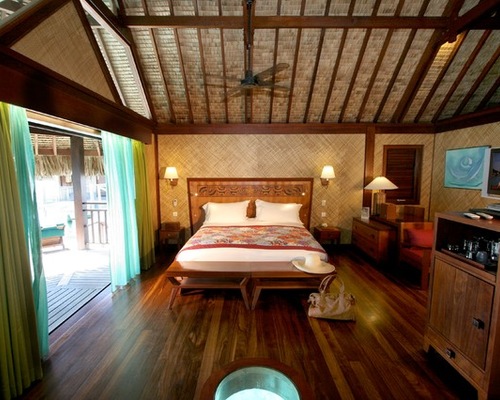

South Seas 5: Christine Ciarmello, original photo on Houzz
Borrow Tahitian patterns. The bed frame is etched with Marquesan tattoo symbols. The bed throw has a hibiscus print. At Le Méridien Tahiti, I also saw fish etched into a glass panel in the bathroom (not shown).
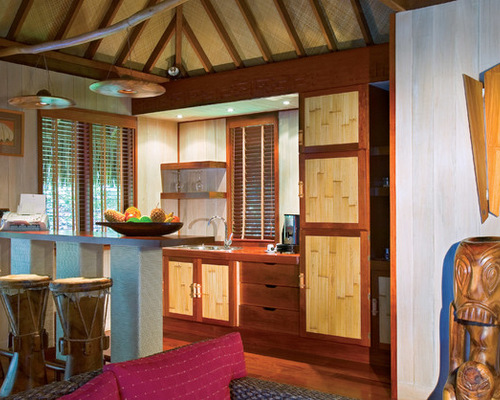

South Seas 6: Christine Ciarmello, original photo on Houzz
Bring out the warrior. In this kitchen at a villa at Sofitel Bora Bora Private Island is a tiki, an arrow-like sconce, disk-like wooden overhead fixtures and bar stools that mimic rustic handmade drums.
Are Bamboo Products Really Earth-Friendly?


